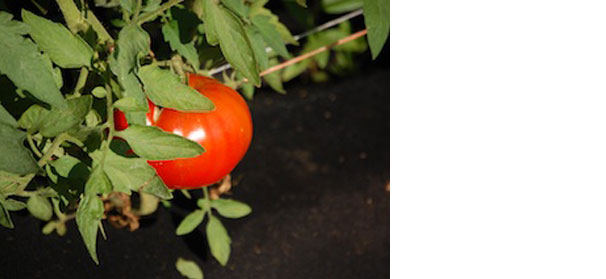

Jul 23, 2012Editorial: Unlocking the tomato genome
At the end of May, the French National Institute for Agricultural Research (INRA) and Tomato Genome Consortium announced that they had sequenced the genomes of the domesticated tomato and its wild relative.
My understanding of genetics and plant breeding is very, very general, but I think it’s safe to say this will be a good thing for the tomato industry. According to an INRA press release, the breakthrough is “expected to lower costs and speed up efforts to improve worldwide tomato production, making it better equipped to fight pests, pathogens, droughts and diseases that plague growers.”
According to the press release, the sequencing provides the “most detailed look yet at the functional portions of the tomato genome, revealing the order, orientation, types and relative positions of its 35,000 genes. The sequences will help researchers uncover the relationships between tomato genes and traits and broaden their understanding of how genetics and environmental factors interact to determine a field crop’s health and viability.”
The breakthrough might be good for other crops, too. The tomato is a member of the Solanaceae, or nightshade, family, which includes potato, pepper, eggplant and petunia. The new tomato sequences could help identify important genes in these relatives, according to INRA.
“The sequences also offer insight into how the tomato has diversified and adapted to new environments. They show that the tomato genome expanded abruptly about 60 million years ago, at a time close to one of the large mass extinctions,” according to INRA.
Researchers from the University of Georgia’s (UGA) Plant Genome Mapping Laboratory helped sequence the tomato genome, a process that took about a decade.
The UGA team worked under the guidance of Andrew Paterson, a professor of plant breeding and genetics. From 2009 onward, Paterson’s team studied the evolutionary history of the tomato genome, according to UGA.
“This project combined fundamental insight into flowering plant evolution, in particular the first case known of a lineage that experienced consecutive genome triplications, with application-oriented work such as the discovery of many genes likely to contribute to breeding better tomatoes,” Paterson said.
The project focused on the sequence of one domestic tomato variety, Heinz 1706. That sequence can be used to more fully decipher the genetic makeup of other varieties, according to UGA.
Jay Scott, a tomato breeder and geneticist at the University of Florida, said the fully sequenced genome would speed up future plant-breeding efforts. A “saturation of molecular markers” is now available, giving breeders options they didn’t have before, he said.
In the past, when a breeder would cross two parents that had desirable traits, other undesirable traits would come along for the ride. Now, desirable traits can be isolated from undesirable traits. For example, Scott and his team have closely mapped a gene resistant to tomato yellow leaf curl virus, without having to deal with any associated “deleterious traits,” he said.
“It’s an interesting time,” Scott said. “There are a lot of things we’re really excited about in the genomics era.”
The genome sequence and related resources can be found at the Solgenomics website, www.solgenomics.net.
By Matt Milkovich, Managing Editor
none














